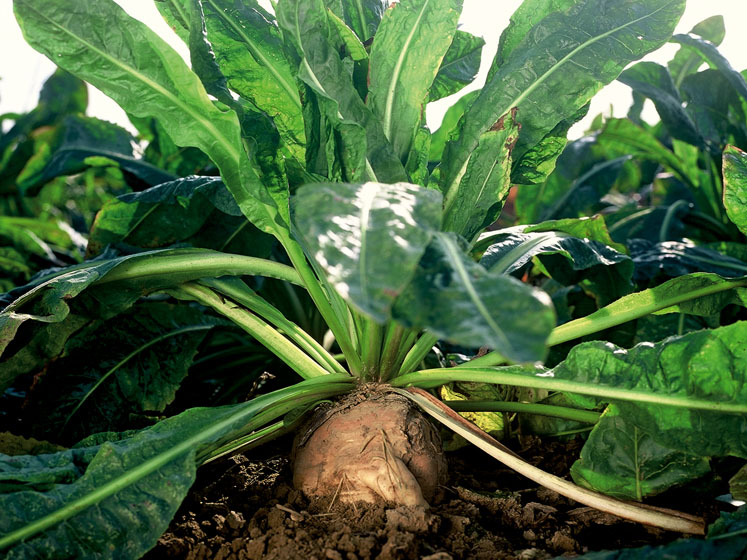The systematic review with meta-analyses, considered to be the strongest methodology in the hierarchy of scientific evidence, included 50 human intervention studies with a total of 2495 participants.1 These were selected based on an extensive literature search and review process that followed the guidelines of the Cochrane Handbook for Systematic Reviews and Interventions.2
This research evidenced that inulin, oligofructose and combinations thereof, derived from the chicory root as the source of origin, act as a bifidogenic factor, promoting the selective growth of Bifidobacteria.
The systematic review with meta-analyses also demonstrates that chicory root fibre is a prebiotic that complies with the ISAPP (International Scientific Association for Probiotics and Prebiotics) definition of prebiotics.
The researchers further reported that the bifidogenic effects of the chicory root fibres were accompanied by improved bowel regularity. This was validated by increased stool frequency in healthy adults and by softer stools in healthy infants and children.
At the time of publication, Anke Sentko (AS), Vice President of Regulatory Affairs and Nutrition Communication at BENEO, commented: “I am extremely pleased that this detailed critical systematic review with meta-analyses has been done."

"Following the highest quality scientific evidence methodology, the prebiotic effect of inulin-type fructans sourced from the chicory root is confirmed. It yet again shows that integrating chicory root fibres into a person’s daily diet supports Bifidobacteria and thus their gut microbiome, while also improving the bowel functions of the very young to the very old.”
Delving deeper
In a recent follow-up conversation with Dr Kevin Robinson (KSR), Anke was keen to re-emphasise the importance of the research. “In a global business-to business (B2B) environment, when it comes to product launches, registrations and/or claims monitoring, you need to show that the ingredient you use delivers what’s promised,” she said.
“With the growing levels of interest in the gut microbiome and its health effects, it was high time that the global research community took a rigorous look at all the available science. For BENEO, we wanted to know more about how our customers could benefit and also how this information could support our B2B communication and the ingredients we produce."
"Having a large and robust body of evidence is a big advantage in terms of inulin-type fructans — as a common denominator — and chicory derived fructans in particular.”
Research that’s based on 50 randomised and controlled trials is pretty unique. You don’t normally see that in science and, even less so for population recommendations.
“To put this into perspective,” says Anke, “having enough scientific evidence to conduct a systematic meta-analysis is the gold standard. This puts the industry, and those customers who are using our ingredients, in a very comfortable position. It’s perhaps more important in terms of increasing consumer interest, encouraging the public to talk about digestive health and providing the proof to support prebiotic ingredient claims.”
“As you know, we’re dealing with a comparatively small world of oligofructose, inulin and galacto-oligosaccharide as proven prebiotics, which has now been ratified by ISAPP and the Chinese Nutrition Society. This is exactly the kind of discipline in the market that we need. It’s vital that we don’t mislead consumers with ingredients that claim to be prebiotics but lack any science.”
Beyond the bench
KSR: What are the real-world applications of this of these findings? Equipped with this information, what does that mean for formulators and how does it affect what BENEO produces for the market?
AS: It all starts with ingredient choice. If you want to make a product that targets digestive health or the gut microbiome, you need to know what works and what doesn’t. We know that diet has an effect, so you have to look for ingredients that enrich what you consume and promote the growth of beneficial bacteria.

This isn’t a new concept, of course, but it’s taken time to raise public awareness and get that knowledge into people’s minds. Now, research has shown that more than 70% of consumers understand that maintaining a balanced diet is important.
The connection has already been made between diet and well-being … and now it’s cascading down to gut health. Once awareness has been established, it’s then about finding the best products — including inulin-type fructans from chicory as proven prebiotics — to address the needs of the consumer and those of the regulatory bodies.
KSR: Beyond becoming more aware of digestive health issues, do you think this growing body of evidence is helping consumers to overcome the stigma of talking about going to the toilet?
AS: That’s one effect … and one that shouldn’t be underestimated. But, digestive health is more than just stool frequency; you have to consider the holistic aspect of supporting beneficial gut bacteria. It’s another way that prebiotics positively influence the intra-intestinal environment.
The stomach content becomes more acidic, for example, more vitamins are produced and minerals absorbed, because of the lower pH, it’s a less attractive environment for pathogens to flourish in.
The antibacterial/antiviral conditions keep your gut and immune system in good shape. The gut wall also thickens, supported by the epithelium, which provides a stronger, less leaky barrier and stops any pathogens escaping.
Yet, we now also know that this effect is extra-intestinal as well. Researchers discovered that metabolites such as short-chain fatty acids are absorbed from the gut and reach other cells (such as the brain, liver and kidneys); they can be systemic but, essentially, metabolites from the gut can reach every part of your body (via the bloodstream) and act, for example, as anti-inflammatory agents.
Taking a wider view, a diet that positively influences the gut microbiota and prevents inflammation offers a viable way to actively support health … even therapeutically.
This is bigger than muesli bars; this touches on clinical nutrition and particular diets/ingredients that can complement existing medicines and disease management. Basically, diet is the new medicine.
KSR: Are there regulatory implications associated with a potential food–pharma crossover?
AS: I’m still a believer in food and nutrition, so it’s not always about the claim on the pack. For example, our chicory root fibre is a preferred food for Bifidobacteria. You have to let nature work; as an example, these bacteria have a specific enzyme that splits ß-2–ß-1 links and makes the inulin easy to digest.

As such, they have the perfect environment in which to grow and multiply. The upshot of that is a health benefit for us as their host.
In addition, you could also take a probiotic — something that doesn’t naturally occur in the gut — to tackle a specific condition in a defined way.
Furthermore, ongoing research is looking at an alternative route to enhanced digestive health: why not feed your microbiome by swallowing Bifidobacteria or the metabolites they produce? These so-called postbiotics, for me, venture into the realm of medicine as opposed to food … but that’s definitely something for the regulators to debate.
Whatever the legislation, doors are opening for ingredient companies to help medical professionals. Already, for conditions such as obesity and diabetes, special diets are available and being recommended.
And as the food industry gets more involved in clinical nutrition, particularly with powder-based actives that support these diets, the gut microbiome will be increasingly recognised as an organ of influence in healthcare. It’s a turning point for nutraceuticals because it should be a lot easier to demonstrate how a disease condition has improved … as opposed to making the “already well” even more healthy.
Where next?
When asked about future applications, Anke believes that the gut microbiome has a lot to do with personalised nutrition and healthy ageing. “As we get older, our microbiome changes and imbalances occur,” she says.
“In a recent 14-day trial that involved adding inulin and isomaltulose to a regular diet, we measured the microbial content of the participants’ faeces to analyse the Bifidobacteria population, and also assessed their blood sugar levels throughout the intervention.”3
“What we found was a significant reduction in the overall blood glucose response. There was less variation, fewer fluctuations and, at the same time, an increase of the number of Bifidobacteria.
Of course, this wasn’t a randomised or blinded trial, but we did get some insights into whether these products actually benefit the real lives of normal people, which helps to provide a more complete picture of how we can contribute to the better health of the planet’s population.
References
- D.U. Nagy, et al., “Effect of Chicory Derived Inulin-Type Fructans on Abundance of Bifidobacterium and on Bowel Function: A Systematic Review with Meta Analyses,” Critical Reviews in Food Science and Nutrition: www.tandfonline.com/doi/full/10.1080/10408398.2022.2098246 (2022).
- J.P.T. Higgins, et al., (Eds.), Cochrane Handbook for Systematic Reviews of Interventions, Version 6.3 (updated February 2022): https://training.cochrane.org/handbook.
- A. Kordowski, et al., “Palatinose (Isomaltulose) and Prebiotic Inulin-Type Fructans Have Beneficial Effects on Glycemic Response and Gut Microbiota Composition in Healthy Volunteers – A Real-Life, Retrospective Study of a Cohort That Participated in a Digital Nutrition Program,” Frontiers in Nutrition: www.frontiersin.org/articles/10.3389/fnut.2022.829933/full (2022).

